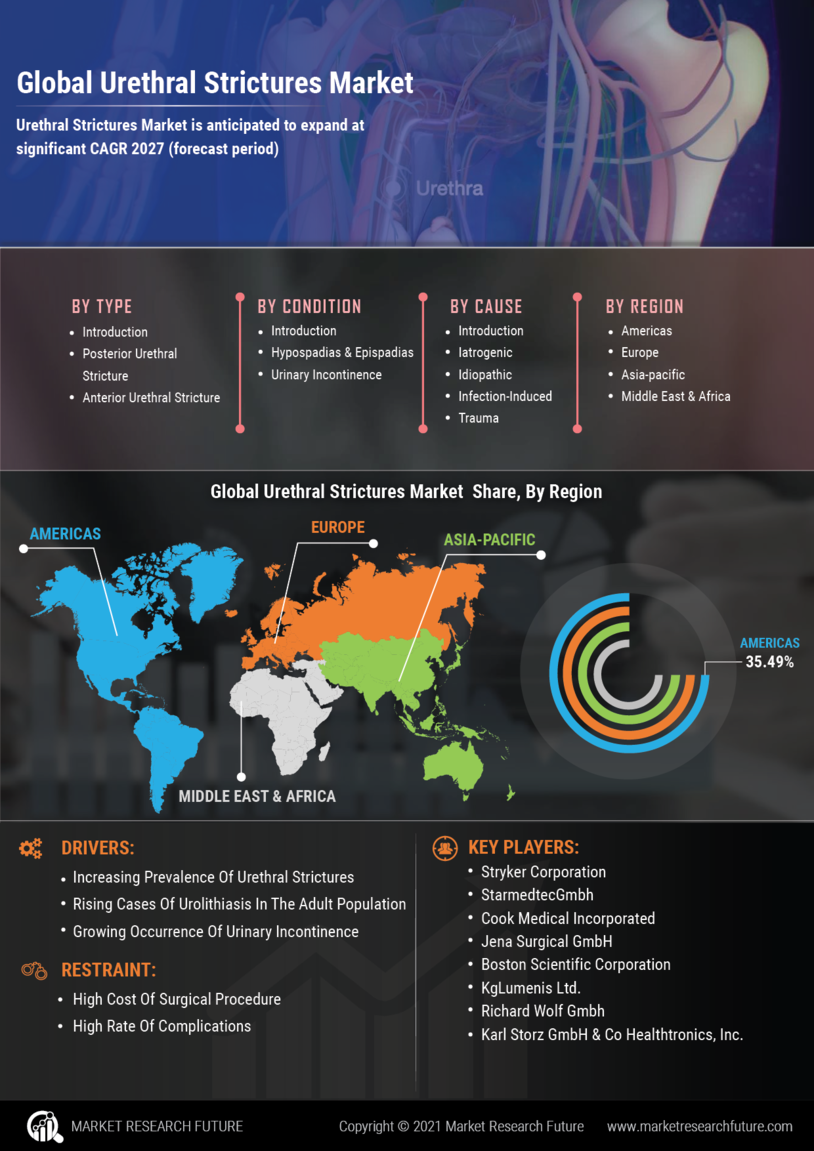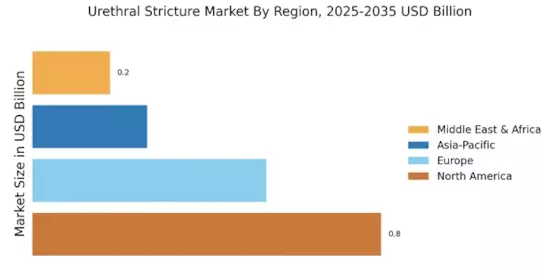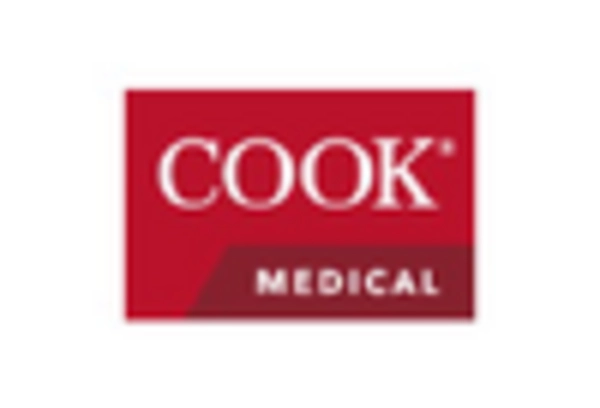Advancements in Surgical Techniques
Advancements in surgical techniques are significantly influencing the Urethral Stricture Market. Minimally invasive procedures, such as endoscopic urethrotomy and urethral dilation, have gained traction due to their reduced recovery times and lower complication rates. These innovations not only enhance patient outcomes but also expand the range of treatment options available for urethral strictures. The market is witnessing a shift towards these advanced surgical methods, which are becoming increasingly preferred by both patients and healthcare providers. Additionally, the integration of robotic-assisted surgeries is anticipated to further revolutionize the Urethral Stricture Market, offering precision and improved results. As these techniques continue to evolve, they are likely to drive market growth by attracting more patients seeking effective and less invasive treatment alternatives.
Growing Investment in Urological Research
The growing investment in urological research is a crucial driver for the Urethral Stricture Market. Increased funding from both public and private sectors is facilitating the development of novel therapies and technologies aimed at treating urethral strictures. Research initiatives focusing on regenerative medicine and tissue engineering are particularly promising, as they hold the potential to revolutionize treatment paradigms. For instance, studies exploring the use of stem cells and biomaterials for urethral reconstruction are gaining momentum. This influx of research funding is expected to yield innovative solutions that address the limitations of current treatment options, thereby enhancing the overall efficacy of interventions in the Urethral Stricture Market. As new findings emerge, they may lead to the introduction of advanced products and therapies, further driving market expansion.
Rising Awareness and Education Initiatives
Rising awareness and education initiatives regarding urethral strictures are playing a pivotal role in shaping the Urethral Stricture Market. Healthcare organizations and advocacy groups are increasingly focusing on educating both patients and healthcare providers about the causes, symptoms, and treatment options for urethral strictures. This heightened awareness is likely to lead to earlier diagnosis and treatment, which can significantly improve patient outcomes. Furthermore, educational campaigns are fostering a better understanding of the condition, thereby reducing stigma and encouraging individuals to seek medical help. As awareness continues to grow, the demand for effective treatment solutions within the Urethral Stricture Market is expected to rise, prompting manufacturers to innovate and expand their product offerings.
Increasing Incidence of Urethral Strictures
The rising incidence of urethral strictures is a primary driver for the Urethral Stricture Market. Factors such as trauma, infections, and surgical complications contribute to this increase. According to recent data, the prevalence of urethral strictures is estimated to affect approximately 1 in 300 males, with a notable rise in cases among older populations. This growing patient demographic necessitates advanced treatment options, thereby propelling market growth. Furthermore, the increasing awareness of urethral stricture conditions among healthcare professionals and patients is likely to lead to earlier diagnosis and intervention, further stimulating demand within the Urethral Stricture Market. As healthcare systems evolve, the focus on effective management strategies for urethral strictures is expected to intensify, creating opportunities for innovative therapies and technologies.
Technological Innovations in Diagnostic Tools
Technological innovations in diagnostic tools are emerging as a key driver for the Urethral Stricture Market. Enhanced imaging techniques, such as MRI and ultrasound, are improving the accuracy of urethral stricture diagnoses, allowing for more tailored treatment approaches. These advancements not only facilitate early detection but also enable healthcare providers to monitor treatment efficacy more effectively. The integration of artificial intelligence in diagnostic processes is also gaining traction, potentially streamlining patient assessments and improving clinical decision-making. As these technologies continue to evolve, they are likely to enhance the overall management of urethral strictures, thereby driving growth within the Urethral Stricture Market. The demand for precise and efficient diagnostic tools is expected to increase, prompting further investment in innovative solutions.


















Leave a Comment